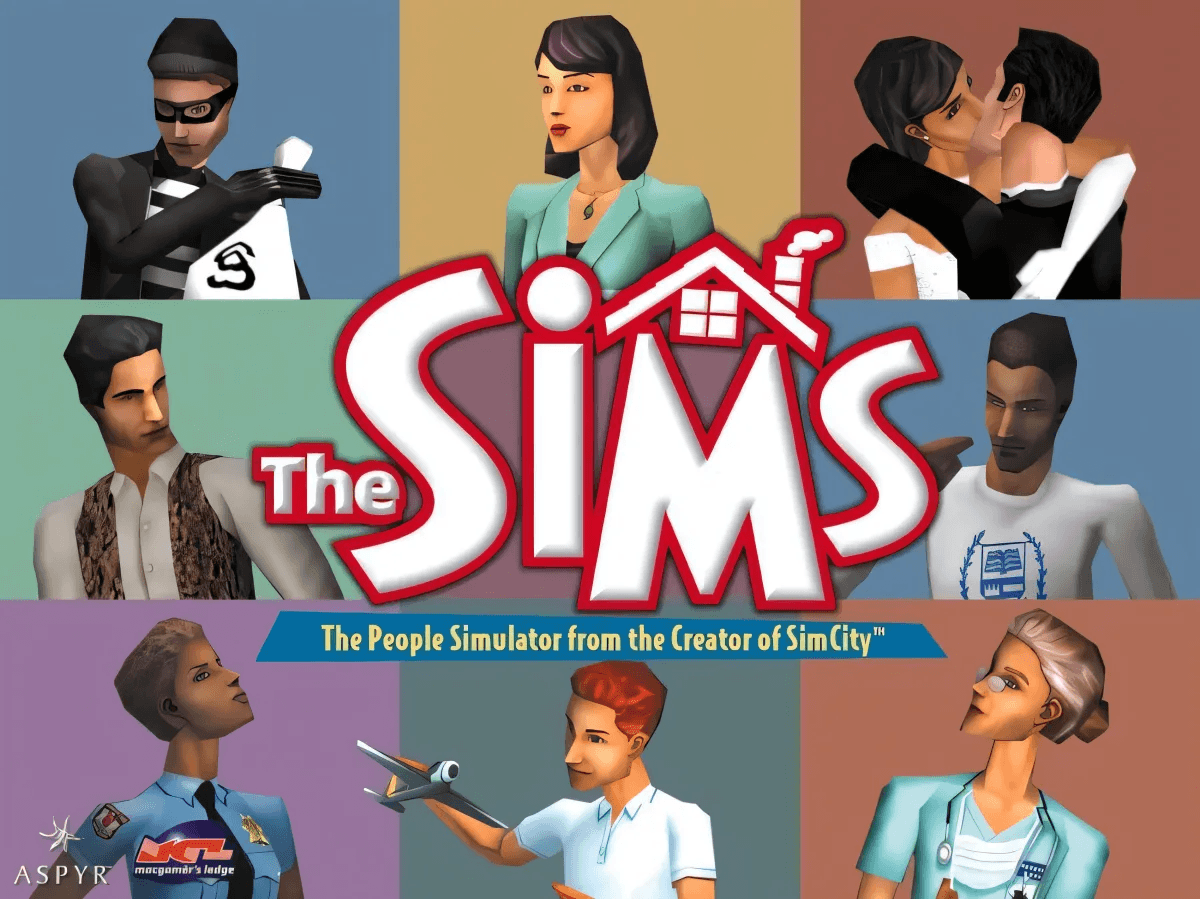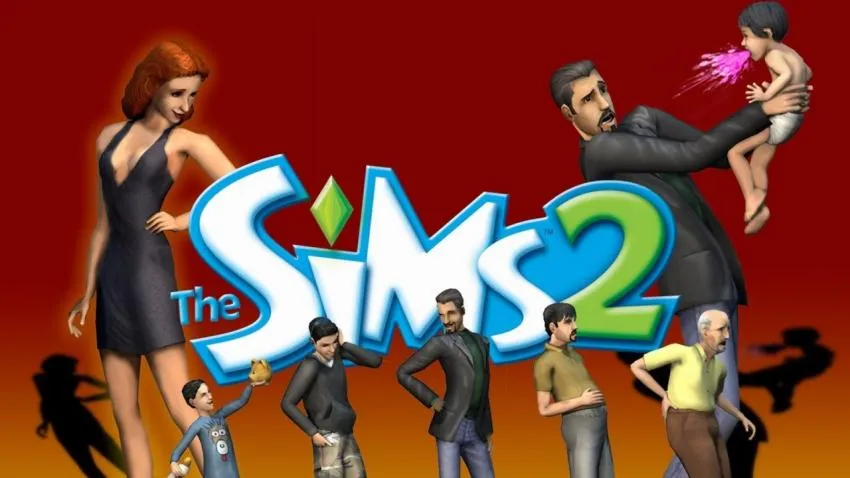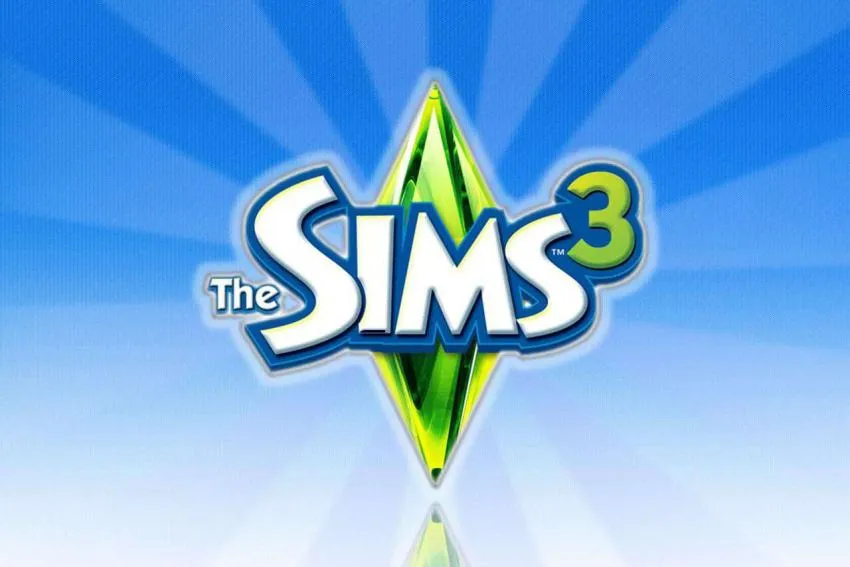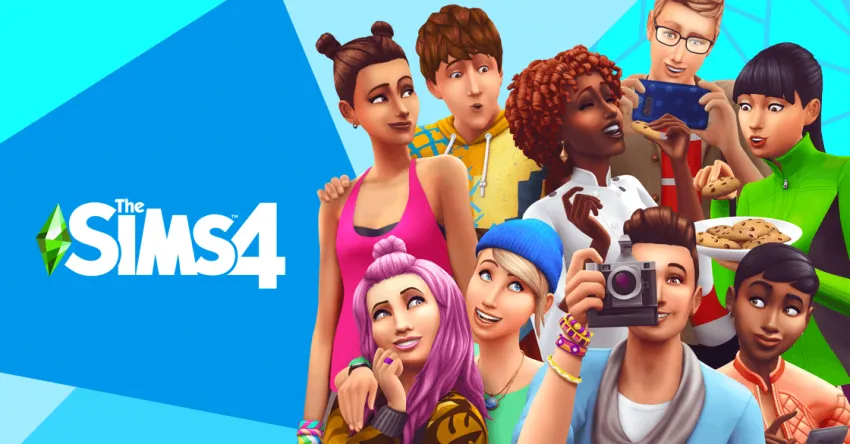The Pros And Cons Of Every Sims Game
Over the past two decades, The Sims games have brought about millions of fans and secured a place in gaming history for the franchise. To this day, it is still one of the highest-selling PC games of all time, and its console versions made big sales as well.
So what is it that has kept the fans engaged all of these years? Well, put simply, the developers have been excellent at listening to criticism from the community and making the appropriate fixes when a new game is released. Each game has its strengths and weaknesses, but when we look at the bigger picture we can see that the Sims games just keep getting better and better.
In order to see what I mean, we would have to look at each individual game's features and compare them to the installments that came afterward. To keep things concise, I won't be discussing the spinoff games, only the 4 base games.
The Sims

The first Sims game was released on February 4, 2000. The buzz around its release was significant as gamers were interested in the concept of a customizable life simulation game. It went on to sell more than 11 million copies and create a fanbase that would remain loyal for years to come.
The advantage the first game has over the others is that it was the first of its kind from these developers, so there wasn't a blueprint or precedent for it to be compared to. It allowed players to control their Sims by monitoring their needs — specifically hunger, sleep, fun, social engagement, comfort, bladder room, hygiene, and room — and controlling their decisions. Not to mention, the character models were pretty detailed considering the time period.
As if the base game wasn't enough, another perk of the first Sims game is the availability of expansion packs. Sure, the other Sims games also have expansion packs, but these packs held more weight with this installment. Again, this game was a trailblazer, and for a game that seemingly already had so much to it, it was baffling at the time to see expansion packs released with even more playable content.
The original game had many of the same gameplay features we see today and would be essential in shaping the gameplay of the installments to follow. However, being the first game in a well-developed series like this also has its downsides. Although it was new at the time, in retrospect, the base game was missing many key features of life.
The first thing that is noticeably missing is weekends or days off. In current Sims games, your Sim has days off from work or school, giving them time to recharge and take care of other things. In The Sims, your characters are expected to attend their engagements every single day and are penalized for missing too much.
Another issue many players had with the game was the lack of diversification in the character creation screen. Many of the culturally relevant features — such as varied skin tones and hairstyles — were only available through the expansion packs. While it's nice that these features were available at all considering the state of the times, it didn't sit right with some fans that extra money would have to be spent to create Sims that looked like them.
Lastly, the process of aging was almost nonexistent in this game. Adult Sims would never die of natural causes; you would have to do something purposeful to kill them. The toddlers eventually age u to children, but then they just stay kids forever. This is an issue that was eventually fixed in later games.
The Sims 2

The series' highly anticipated second installment, The Sims 2, was originally released 4 years after the original on September 14, 2004. It boasted improved graphics and expanded gameplay options. Working with new technology and constructive criticism from the first game, the developers were able to give the game a much-needed makeover.
The first advantage of The Sims 2 is it introduced a solution to its predecessor's aging issue: the addition of time-specific life stages for each Sim. In The Sims 2, a newborn Sim will go through being a baby, then a toddler, then a child, a teen, a young adult, an adult, and lastly an elder before dying of natural causes. This made the gameplay feel more realistic and added a sort of time limit to the game.
Additionally, aspirations wants, and fears were all added to the game in order to make the Sims' lives even more customizable. This addition gave the game more direction and structure. The aspirations gave the Sims something to work toward, and the wants & fears hint at actions that would make the Sims happy or upset. In all, it completely changed the way the game was played.
The console versions of The Sims 2 included a story mode, in which your Sim has to accomplish game-mandated milestones in order to move forward and unlock new lots. It provided another style of gameplay that was even more structured than the free play mode.
The most impressive improvements were the visuals. The graphics were improved and the Create-A-Sim features were expanded. As a result, the Sims looked more realistic. The developers also changed the default view of the game and introduced more camera angles, allowing the player to make full use of the space.
These additions excited players and the game went on to sell over 13 million copies across all platforms. However, now that the fans knew what Maxis was capable of, the expectations for the next installment were high.
The very first Sims game I ever played was the Sims 2 on the PlayStation 2, and I remember my only major complaint being that I wished the world was more open. You could travel, but only between "lots", which were essentially just the houses. You couldn't actually walk very far.
A minor complaint I had was that although there were a variety of new clothing and build mode items, many of them had to be unlocked, and it was a bit difficult to unlock them. This made me feel like although there were many options available, I was only able to take advantage of half of the game for a while before I finally had access to everyone. However, I would later learn that this could be rectified with cheats.
The Sims 3

The Sims 3 fell into the hands of fans on June 2, 2009. There weren't too many differences between The Sims 2 and The Sims 3, as the developers did not add as many features to this installment as they had to its predecessor. However, they did improve the graphics and character creation features, as the fans expected.
The only major upgrade to The Sims 3 is, admittedly, the only one that was really needed. In true Maxis fashion, the developers answered the fans' pleas and expanded the playable world. In The Sims 3, you can actually walk off of your lot and explore the town around you, which is literally all I asked for. I couldn't have been more thrilled.
At this point, fans expected each game to look better than the last, and include new items or features. The Sims 3 Create-A-Sim was once again more detailed than the last, and fans were closer to creating characters that looked just like them. The skin and body type options were expanded but still fell short of representing all types.
Another Create-A-Sim feature that was updated was the personality formation. In the games before, the Sims' personalities were based on a point system in which points were distributed between different traits. The Sims 3 introduced a new system where the player just selects which traits they want their Sim to have.
This installment also introduced new settings to be tweaked. This included the option of adjusting the Sims' lifespans — an addition that allowed players more control over how long their games were lasting and how much they were able to accomplish.
On the downside, The Sims 3 took up almost twice as much space as The Sims 2. However, this is due to all of the items and other content that was added to the game. Other than this, there weren't many other major complaints about this game. Mainly because the developers played it safe and only made the changes that were requested.
The only thing the fans truly expected from the next installment was for the developers to continue their pattern of updating the graphics, and they did not disappoint.
The Sims 4

Last but definitely not least, the latest installment of the franchise was released on September 2, 2014. A little under a month earlier on August 12, Maxis released the Create-A-Sim demo which allowed fans to try out the new features before the official drop of the game. The new, super detailed Sim creation screen was the most anticipated part of this new installment and this unexpected early release sent fans into a frenzy.
I remember downloading it immediately and being in awe at how different details you could tweak to make your Sim look just like you. There was even the addition of a detail edit mode, which let you change very specific features like eyelid size and cheekbone height. Additionally, the variety of skin color options were finally up to par with my expectations.
When the full game was released, we were able to experience the full extent of the new features, including the extensive new clothing options and body modification tools. The pinch and pull controls added precision to Sims' creation like the game had never seen before. The new Create-A-Sim screen also featured new aspirations and traits, as well as expanded sex and gender options.
The game advertisements claimed that the new and improved Sims were smarter and had more accurate emotions. They also introduced the gallery, where players are able to showcase their creations for others Simmers to see.
There were multiple areas to a neighborhood on any given map, and each area boasted a different vibe. Some areas were exclusive to private lots, and others are more public and hold bars, parks, or other communal places.
The expansion packs for this installment expanded the content even further, adding new maps and a multitude of new objects and interaction choices. If this isn't enough, there are also plenty of cheats and mods that can be added to the game to shake things up.
From my own experience, it's clear that The Sims 4 has the best features, the best visuals, and runs the smoothest when compared to its predecessors. The world feels more open than ever before, and the developers continue to release expansion packs and stuff packs that keep the game fresh and exciting.
No matter which Sims game you may have started with or plan to start with, it's always a pleasant experience. Every new addition to the series has added new possibilities to gaming and provided fans with top-notch life simulation.
The franchise has proved itself to be receptive to fans by listening to criticism throughout the years and making improvements on the new installments accordingly. I believe this to be why the game remains relevant after all this time and why fans always flock back to the game.
Over time, we have seen improved character creation tools, new build mode items, and construction options, a rehaul of the entire Sim personality selection tools, new neighborhoods, and expanded social and action options. If the developers have shown us anything, it's that the game only continues to get better, and we should be eagerly awaiting the next installment.
There has been no word of an official release date for The Sims 5 yet, but based on the series' current trajectory, fans are expecting it to be nothing less than extraordinary. Based on what we've seen so far, we can definitely expect better graphics, visuals, and gameplay than we've ever had before. We are counting the days until they drop!
Opinions and Perspectives
I miss the complexity of relationships from Sims 2. Everything feels simplified now.
The neighborhood stories in Sims 4 is a step in the right direction but needs more depth.
I love how we can customize lot challenges now. Makes each playthrough unique.
I miss the grocery shopping from Sims 2. Added a layer of realism to the game.
I appreciate how The Sims has evolved with society, becoming more inclusive and representative.
The whims system in Sims 4 feels less meaningful than the wants and fears system in Sims 2.
Remember when we could actually see our Sims go to work in Sims 3? That was cool.
I miss having tanks full of fish like in the original game. The aquariums now just aren't the same.
The ability to travel between worlds in Sims 4 is actually better than Sims 3's open world in my opinion.
I love how each game built on the foundation of the previous ones while trying new things.
The loading screens in Sims 4 are worth it for how smooth the game runs.
Sims 3 had the best customization options with the color wheel and patterns.
The way they improved graphics over the series is impressive, but gameplay should always come first.
I miss the random events from earlier games. Made things more unpredictable and fun.
The lot traits in Sims 4 add such interesting gameplay elements. Makes each house feel unique.
I actually prefer the more cartoony style of Sims 4 to the attempt at realism in Sims 3.
The way Sims can multitask now is great, but sometimes they spend too much time chatting and not enough time doing what I tell them to.
I love how we can modify any lot type in Sims 4. Makes building community lots so much more fun.
The lack of cars in Sims 4 still bothers me. It made the world feel more alive in previous games.
Does anyone else think the Sims in 4 are too happy all the time? I miss the drama from earlier games.
The create-a-sim in Sims 4 is incredible. I can finally make Sims that actually look like real people.
Building in Sims 4 is so much more intuitive. No more placing walls piece by piece!
The first time I saw my Sim die of old age in Sims 2, I was genuinely emotional. Such a game-changing feature.
I actually enjoy the smaller worlds in Sims 4. Makes it easier to keep track of all my Sims.
Remember how revolutionary it felt when Sims 2 introduced aging? Changed the whole gameplay experience.
The lack of story progression in Sims 4 is my biggest complaint. My unplayed households never do anything interesting.
The neighborhood design in Sims 2 was perfect. Each world felt like it had its own personality and story.
I love that each game kept the core gameplay while adding new features. Shows how solid the original concept was.
The Sims 4 emotions system is nice in theory, but it feels a bit too chaotic sometimes.
I really miss the memories system from the older games. It made each Sim feel like they had their own unique story.
The customization options in Sims 4 are amazing, but I wish they'd bring back create-a-style from Sims 3.
Anyone else spend more time building houses than actually playing with their Sims?
I actually prefer the trait system in Sims 3. Five traits gave our Sims more complex personalities than just three in Sims 4.
The Sims 2 had the best storylines with the premade families. I spent hours playing through all the drama in Pleasantview.
I love how the Sims 4 has expanded gender options. It's great to see the series becoming more inclusive.
Remember when we had to buy expansion packs just to get basic features like pets and seasons? Some things never change...
The Build Mode in Sims 4 is definitely the best in the series. Being able to move entire rooms is such a time-saver.
I miss how quirky the earlier games were. Everything feels a bit too polished in Sims 4.
The loading screens in Sims 4 are actually a blessing in disguise. My laptop would catch fire trying to run Sims 3 open world!
Honestly, I think each game has its strengths. I still play Sims 2 and 4 regularly for different experiences.
The multitasking feature in Sims 4 is fantastic though. Makes the Sims feel more realistic when they can chat while eating.
I started with Sims 3 and tried going back to play Sims 2, but the graphics were too dated for me to enjoy it.
The personalities in Sims 4 feel a bit shallow compared to previous games. My Sims all end up acting pretty much the same.
I found the story mode in Sims 2 console version really fun. Wish they'd bring something like that back.
Does anyone remember the tragic clown from the first game? That thing gave me nightmares as a kid!
The gallery feature in Sims 4 is probably the best addition to the series. I love being able to share and download creations so easily.
I actually disagree about Sims 4 being the best. Sure, the graphics are great, but it feels empty compared to Sims 3's open world.
Sims 2 had the best expansion packs in my opinion. Seasons and University Life were absolutely game-changing.
The first Sims will always hold a special place in my heart. That music still gets stuck in my head sometimes.
You know what I miss most? The burglars from the earlier games. Made things more exciting when you had to watch out for them at night.
I totally agree about missing the color wheel! It gave us so much more customization options.
The character creation in Sims 4 is incredible, but I really think they took a step backward by removing the color wheel from Sims 3.
Anyone else miss the wants and fears system from Sims 2? I feel like it made the game more challenging and engaging.
The open world in Sims 3 was revolutionary, but I actually prefer the loading screens in Sims 4 since my computer runs it much better.
I've been playing The Sims since the original game and it's amazing to see how far it's come. The aging system in the first game was definitely its biggest flaw.
